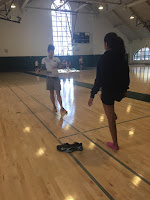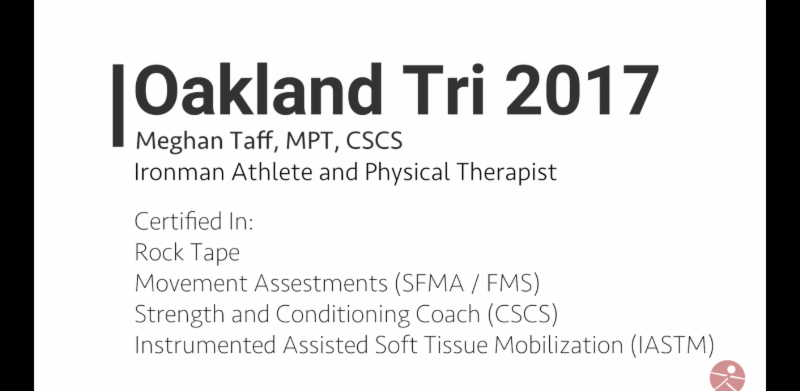Blog credit to Jason Fitzgerald
http://strengthrunning.com
Last Christmas, I treated myself to a
Garmin 610. After wearing it for less than 3 weeks, I haven’t worn it since.
I like it, though. It has a ton of cool features. The display is attractive. It looks a helluva lot better than my $30 Timex.
But after 15+ years of competitive running with no GPS watch, my reliance on my new Garmin was making me a worse runner. So I stopped using it and am back to running by feel.
Running by feel and relying on internal data is a far more effective way to train. Ignorance is often bliss and effort matters far more than specific splits. So I’m back with my trusty Timex and I couldn’t be happier.
How I Learned to Run
I started running as a 14 year old high school freshman in 1998. Back then,
GPS watches weren’t popular and my parents sure as hell weren’t going to buy one for their teenage son who joined the cross country team so he could high jump. Seriously, I thought XC had field events…
During high school, we ran distance runs for time rather than distance and the effort was supposed to be easy. After most of our runs we ran strides.
We relied on our internal data to tell us what an easy run should feel like. That’s why our large team of 30 runners broke up into 3-4 groups as the run continued – some of us could run faster at an easy effort than others.
There were no pace calculators. There were no GPS watches. There was no bemoaning our easy 4 mile loop because we ran it in 32 minutes instead of 30 minutes. After all, who cares?
Only when we ran workouts did we care about our specific pace per mile. The team got on the track and ran intervals at varying paces – and it’s here that I learned what different paces felt like.
Even in college, not a single person on either the cross country or track teams had a GPS watch. We relied on “Badger Miles” to estimate our mileage (distance runs were based on a 7:00 mile pace average).
The real magic happens on the track where I can run almost any pace strictly by feel. That’s a learned skill mastered over years of running various workouts on the track. And like I always say:
"The track never lies!
The truth is that it doesn’t matter much what pace you run during a normal run. What’s more important than whether you ran 8:30 pace instead of 8:45 pace is
how it felt. Was it easy? Did you feel comfortable? Did you follow the
3 C’s of easy running?
GPS Watches Aren’t Accurate Anyway
Most runners worry that they won’t track their
mileage accurately if they don’t use their Garmin. But what makes you think a Garmin is any more accurate?
One day I strapped on my Garmin and ran to the track to run a mile to see how accurate it was.
The result?
I ran 1,511 meters when the Garmin alerted me I had covered a mile – or 1,609.344 meters. The Garmin was off by over 6%, an unacceptable margin of error for me, particularly when I was on level terrain with no buildings or overhead obstructions nearby.
According to my Garmin 610, the “mile” I covered was in 6:53. During this mile, I was trying to run about a 7:00 mile and throughout the entire distance I constantly had to slow myself down. I felt like I was crawling.
Compare that to a loop I regularly run in 69 – 72 minutes that I’m comfortable calling about 10 miles. The Garmin measured this loop as 8.9 miles. The day I measured it I ran it in 68:15 – or 7:40 per mile.
But here’s the interesting part: I ran that loop at a steady-state effort. I was moving. The difference in effort level between 6:53 pace on the track and 7:40 pace on this loop was night and day: recovery run vs. steady-state.
And here is when I refuse to believe my watch. I’ve been running for over 15 years. I’ve raced everything from the 200m sprint to the marathon, with
triathlons, the steeplechase, cross country, and a duathlon thrown in for good measure.
I know my body and I’m damn good at pacing. Here we get to the most important reason why you shouldn’t trust your Garmin.
Garmins Shake Your Confidence
During the weeks I tested my Garmin, I lost confidence in my ability as a runner. I thought I was running about 7:00 pace, only to have to push really hard to average 7:30 pace.
That’s a significant difference, especially since my resume of personal bests indicate that my distance run pace should be in the range of 6:20 – 7:15 per mile.
Had I all of a sudden lost my fitness? Even when I was running more than ever before, having set an annual mileage PR by over 200 miles in 2013?
I don’t think so. And when a training tool shakes your confidence, it’s no longer a valuable training tool.
Bad Data –> Bad Decisions
I only ran for a few weeks with a Garmin – and they were more stressful than racing. I glanced at the watch every minute. I stressed when the pace didn’t correspond with how I felt. I constantly tried to run faster to match what I thought my pace “should” read on my watch.
And after all that stress, it didn’t even matter. They were just easy distance runs, anyway.
Faulty pace data can encourage you to run faster than you should. This is exactly what happened during my runs when my watch claimed I was going 8:00 pace so I sped up so it read about 7:10 (but it felt like a goddamn tempo).
In hindsight, this was a very bad decision. It’s more important to listen to your body, not an inaccurate machine. Internal data is much more critical.
Legendary University of Colorado cross country coach Mark Wetmore is known for not liking heart rate monitors. He tells his runners to pay attention to their internal data instead: respiration, muscle fatigue, how a particular cadence felt, and how fast you intuitively felt you were going relative to your surroundings.
Running by feel and paying attention to this internal data is ultimately much more important than focusing on external data for most of your runs. Since the majority of a distance runners training should be at a comfortable effort level, a particular pace isn’t that important. The effort is what’s important.
Recovery runs should be very easy.
Distance or base runs should be comfortable, controlled, and conversational.
Steady-state running is easier than a tempo run. It’s “comfortably moderate.”
Tempo runs are borderline hard. They’re “comfortably hard.”
Some runners might be annoyed by all these vague definitions. But the runners who get intimately involved with their internal data and know the difference between your tempo pace – and 10 seconds faster or slower – by how it feels will ultimately be more successful.
The Garmin was making me ignore my internal data and run faster than I should. And that’s not a helpful training tool.
As long as you use your Garmin appropriately (take the data with a grain of salt and refer to it
later not mid-run), then it can be helpful. Here’s the model I wear:
Garmin Forerunner 610 Touch Screen.
Tell us what you think about this article and give watch-free Wednesday a shot! That's right, run naked next week (meaning without the watch of course ;) and enjoy the journey - not the numbers.







